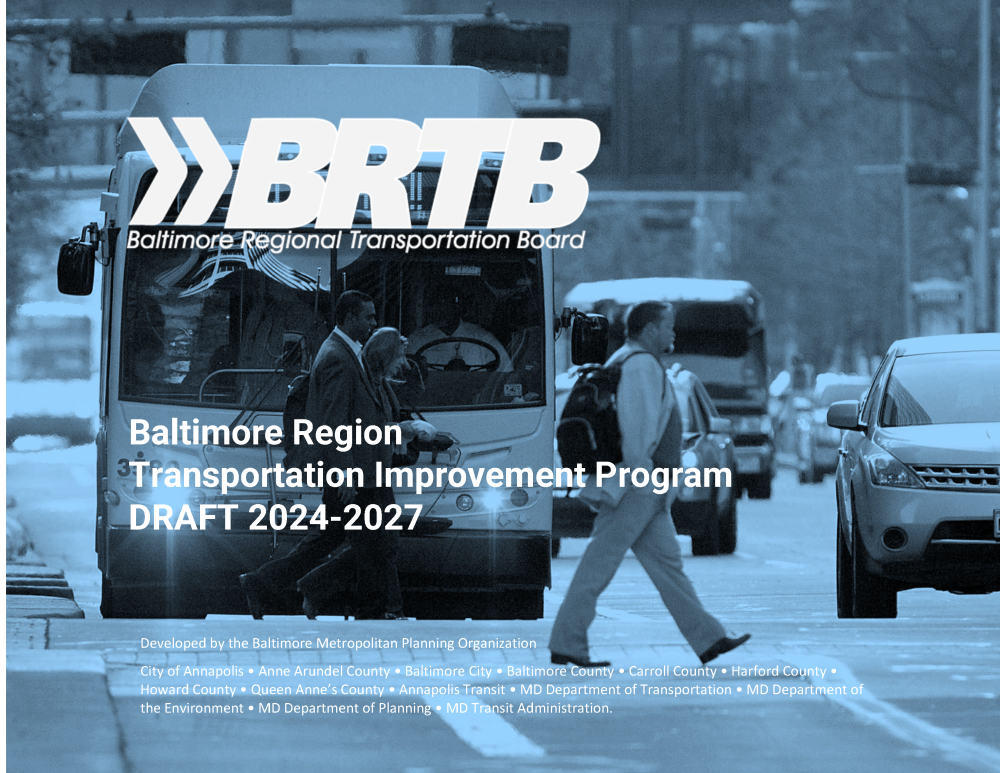Resilience 2050
Resilience 2050
The Baltimore Regional Transportation Board (BRTB) is planning for the future of transportation in our region and we appreciate all the feedback you've shared on over $74 billion worth of transportation investments being planned through 2050. The BRTB has reviewed the 100+ comments received from individuals and those representing larger organizations, coalitions and other stakeholder groups. Read the BRTB response to comments
The Baltimore Regional Transportation Board, as the metropolitan planning organization for the Baltimore region, has put together a list of transportation projects for the coming two decades. An overview is below.
Long Term Investments

This $70 billion plan includes investments supporting the operation and preservation of our transportation system along with details on transit, bicycle, pedestrian, roadway, and interchange projects that may receive federal funding for the years 2028 through 2050. Many of these projects expand roadway or transit capacity, while others help our transportation system to function more efficiently or seek to preserve existing transportation infrastructure.
Please view Resilience 2050 through the BRTB’s interactive map or check out our story map. Resilience 2050 is also available in PDF format for download:
Download Resilience 2050 | Executive Summary | ES Spanish
Chapter 1: Requirements & Policies
Chapter 2: Regional Growth, Forecasting and Demographic Trends
Chapter 3: Factors and Trends | Chapter 4: Regional Goals and Strategies
Chapter 5: Regional Performance Measures and Targets and System Performance Report
Chapter 6: Financial Plan | Chapter 7: Resilience 2050 Major Capital Projects
Appendix A: Glossary | Appendix B: Cost Estimation, Project Evaluation and Scoring
Appendix B: Detailed Scoring New!
Appendix C: Evaluating Potential Effects of Projects | Appendix D: Congestion Management
Appendix E: Public Outreach and Engagement
Short Term Investments

Please view the 2024-2027 TIP through the BRTB’s interactive TIP map or our story map. The 2024-2027 TIP is also available in PDF format for download:
Introduction and Background | Financial Plan
Projects by Jurisdiction: Environmental Justice
Anne Arundel County | Baltimore City | Baltimore County
Carroll County | Harford County | Howard County
MDOT MD Port Administration | MDOT MD Transit Administration
MDOT MD Transportation Authority | Office of Sec and MD Highway Administration
Air Quality Assessment

The Conformity Determination report details a comprehensive analysis of the Baltimore region mobile source emissions as a result of implementing the 2024-2027 TIP and Resilience 2050. The report addresses mobile source emissions of VOC and NOx, which are precursors of ground-level ozone.
Staff from BMC and the Maryland Department of the Environment (MDE) used the Motor Vehicle Emission Simulator (MOVES) 3 model, developed by the U.S. Environmental Protection Agency (EPA) to analyze the amount of mobile source emissions generated from vehicle travel associated with the implementation of the projects in the TIP and Resilence 2050.
Please view the Conformity Determination which is available in PDF format for download.
Download Conformity Determination | Appendices
Want to know more? Join us at one of our public meetings (see the meetings tab above for a list of meetings) or visit the share your thoughts tab to find out how to add a comment or question,
Don't have time for a meeting? Take a look at our story map to learn more:
